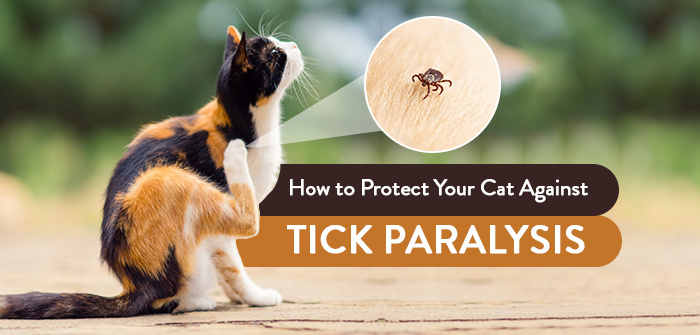How to Protect Your Cats Against Tick Paralysis
Ticks are a common occurrence for Australians across the country. While different ticks have varying effects on cats’ health, a paralysis tick can be fatal to pets. Paralysis ticks are a silent but lethal killer, and Australia’s environment is sadly ideal for their reproduction.
Ticks that cause paralysis can be found throughout the coasts of central and southern Queensland, as well as coastal New South Wales. Paralysis ticks can be found all year in the north, whereas in the south, tick season starts in the winter (August) and ends in late April (November). This is not, however, a fixed timeframe. If the winter is milder than typical, tick season may begin earlier.
It’s more vital than ever to make sure your pets are safe from ticks. Tick paralysis is a life-threatening condition that requires immediate veterinarian care. On Australia’s east coast, tick paralysis is one of the most common preventable causes of death in dogs and cats. It’s vital to be aware of paralysis ticks and to take proactive measures to safeguard your pets. In this blog, we have compiled some crucial information that every pet parent should be aware of. Read now!
Where can you find the paralysis tick the most?
The paralysis tick can be found from Queensland to New South Wales and down to Victoria on Australia’s east coast. Paralysis ticks can also be found in some inland places.
Paralysis ticks prefer to reside in the bush or woodland. Paralysis ticks can be picked up by pets when on vacation at the coast or in a bush/scrub area, or at home in their backyard or the local area, depending on where they live. Paralysis ticks are usually found on wild animals, however, they can also be found on domestic cats and dogs (and humans too). The season for paralysis ticks lasts from spring to autumn, with the majority of cases occurring in the spring and summer. They can, however, happen at any time of year.
What are the symptoms of tick paralysis in cats?
Tick paralysis can cause a variety of clinical symptoms in cats, including:
- Agitation.
- The meow sound may change.
- Breathing rhythm is unusual, with a faint grunt at the completion of each exhalation (breathing out).
- Weakness, which is usually less visible to pet parents at first.
- Retching or gagging.
- Salivation.
- Not eating anything.
- Walking becomes more difficult, and stumbling and swaying become more noticeable in later phases.
- Other strange behaviours.
- Sometimes pets do not show the typical signs of tick paralysis and show unusual symptoms of sickness.
How can I keep my pets safe from paralysis ticks?
Avoid tick habitat: don’t take your pet for a walk in tick-infested bush areas or scrub areas during tick season. Maintain short lawns and bushes, and remove compost from backyards.
Consult your veterinarian for tick control products that are both safe and appropriate for your pet. *Word of advice: Never use dog tick products on cats; some dog tick products can kill cats. Your veterinarian can talk to you about the safest solutions for cats.
Check your pet for ticks every day: even if tick control products have been used, the most important preventative strategy is a thorough inspection of your pet’s skin and coat at least once a day.
Know the symptoms of tick paralysis: recognizing the symptoms will allow you to spot a tick paralysis problem as soon as possible, increasing your pet’s chances of survival by allowing for speedier veterinary treatment. Stay calm and keep your pet relaxed if you notice any tick paralysis symptoms or a tick. While remaining calm, conduct a rapid tick search and removal, then contact your veterinarian right away.
Is my cat susceptible to other ticks?
Other ticks, such as the brown dog tick, bush tick, and kangaroo tick, can infest animals, especially if they live in rural or semi-rural locations with a hot and humid climate. Ticks eat blood but can also transmit diseases like Tick Fever, which can be an issue for pets who have recently moved from a non-tick environment. It is best to inspect your pet for ticks every day and remove any that are discovered. Please contact your local veterinarian if you have any questions regarding ticks in your area.
There are a variety of products available to help protect your pets from ticks and fleas. You can purchase flea and tick preventives at an affordable cost from VetSupply. Remember that some dog tick treatments can be fatal to cats, so check with your local veterinarian first to see which treatments are suitable for your pets.


